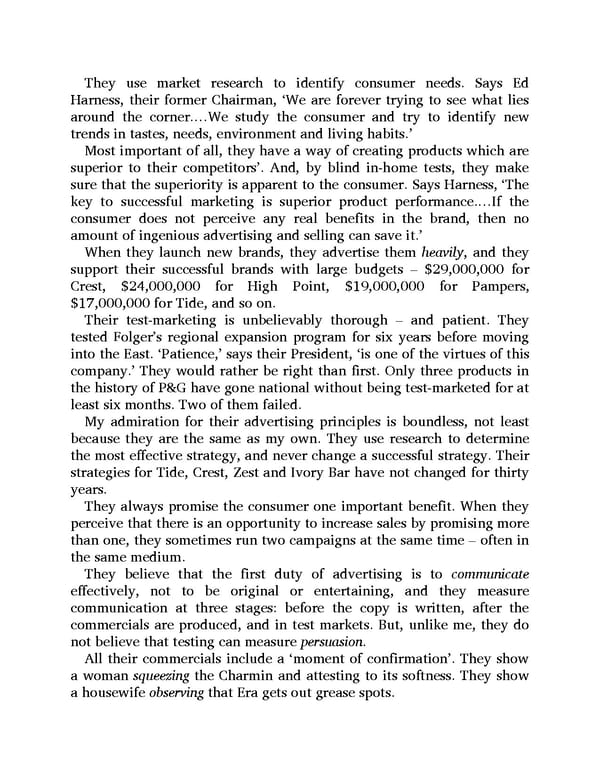They use market research to identify consumer needs. Says Ed Harness, their former Chairman, ‘We are forever trying to see what lies around the corner.…We study the consumer and try to identify new trends in tastes, needs, environment and living habits.’ Most important of all, they have a way of creating products which are superior to their competitors’. And, by blind in-home tests, they make sure that the superiority is apparent to the consumer. Says Harness, ‘The key to successful marketing is superior product performance.…If the consumer does not perceive any real benefits in the brand, then no amount of ingenious advertising and selling can save it.’ When they launch new brands, they advertise them heavily, and they support their successful brands with large budgets – $29,000,000 for Crest, $24,000,000 for High Point, $19,000,000 for Pampers, $17,000,000 for Tide, and so on. Their test-marketing is unbelievably thorough – and patient. They tested Folger’s regional expansion program for six years before moving into the East. ‘Patience,’ says their President, ‘is one of the virtues of this company.’ They would rather be right than first. Only three products in the history of P&G have gone national without being test-marketed for at least six months. Two of them failed. My admiration for their advertising principles is boundless, not least because they are the same as my own. They use research to determine the most effective strategy, and never change a successful strategy. Their strategies for Tide, Crest, Zest and Ivory Bar have not changed for thirty years. They always promise the consumer one important benefit. When they perceive that there is an opportunity to increase sales by promising more than one, they sometimes run two campaigns at the same time – often in the same medium. They believe that the first duty of advertising is to communicate effectively, not to be original or entertaining, and they measure communication at three stages: before the copy is written, after the commercials are produced, and in test markets. But, unlike me, they do not believe that testing can measure persuasion. All their commercials include a ‘moment of confirmation’. They show a woman squeezing the Charmin and attesting to its softness. They show a housewife observing that Era gets out grease spots.
 Ogilvy on Advertising Page 222 Page 224
Ogilvy on Advertising Page 222 Page 224